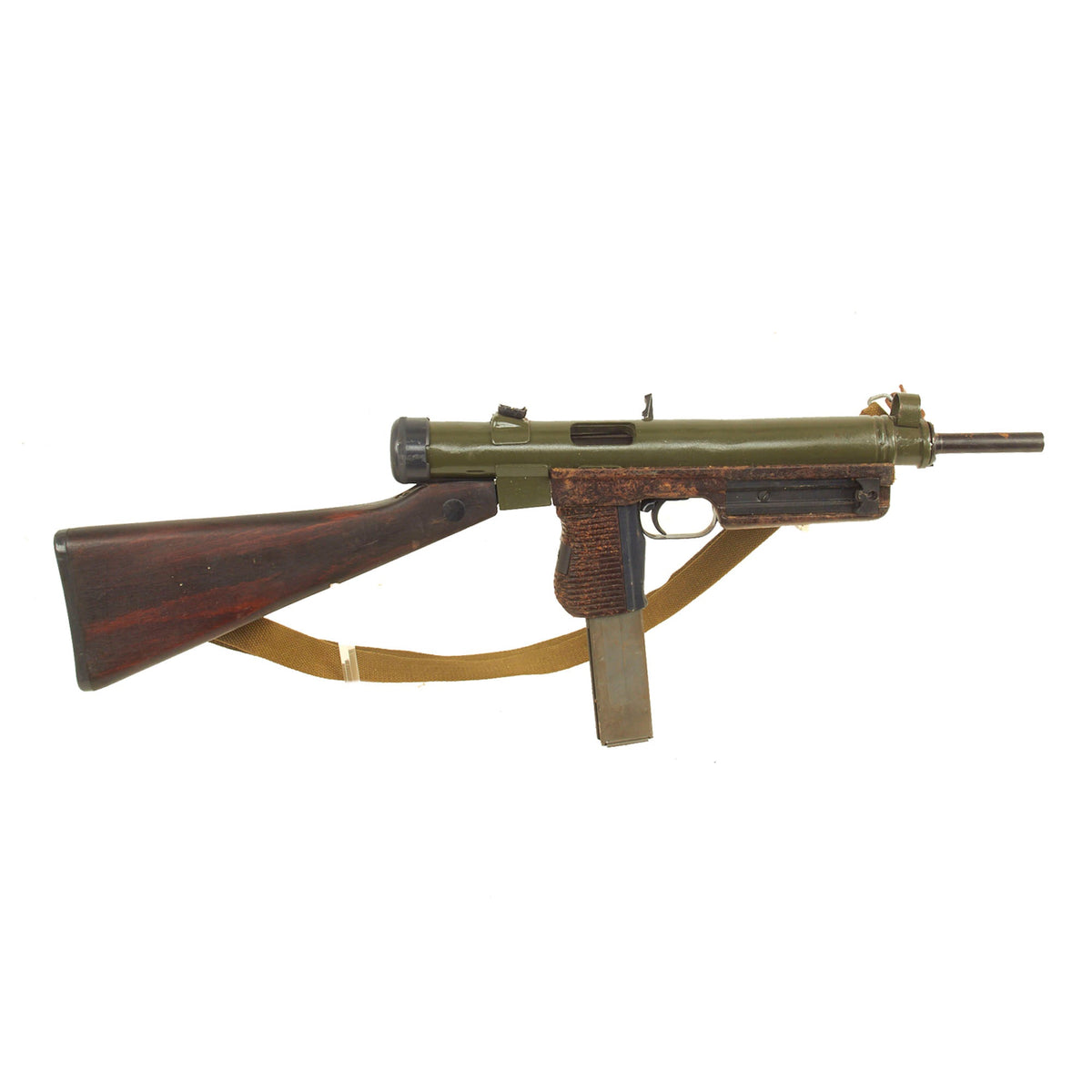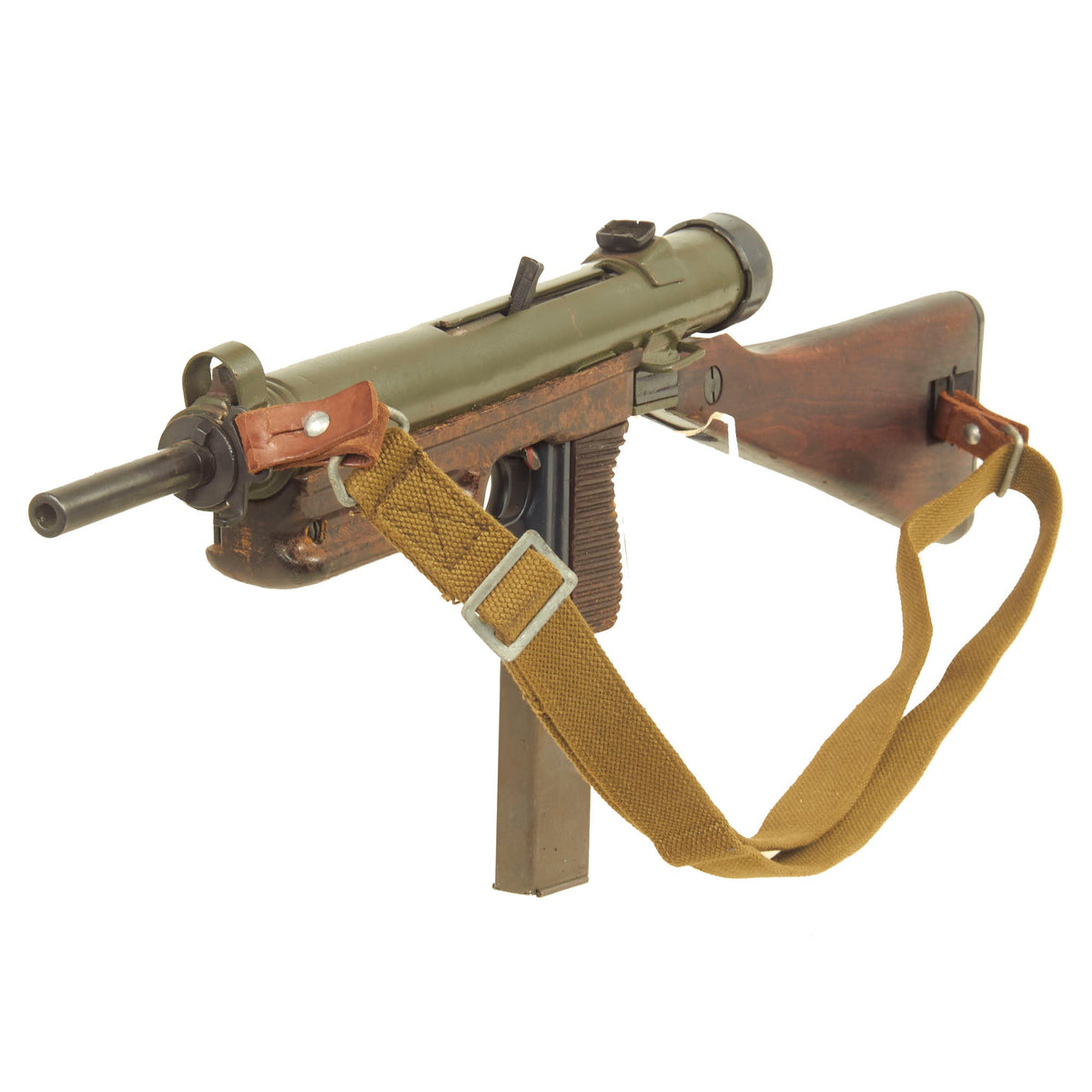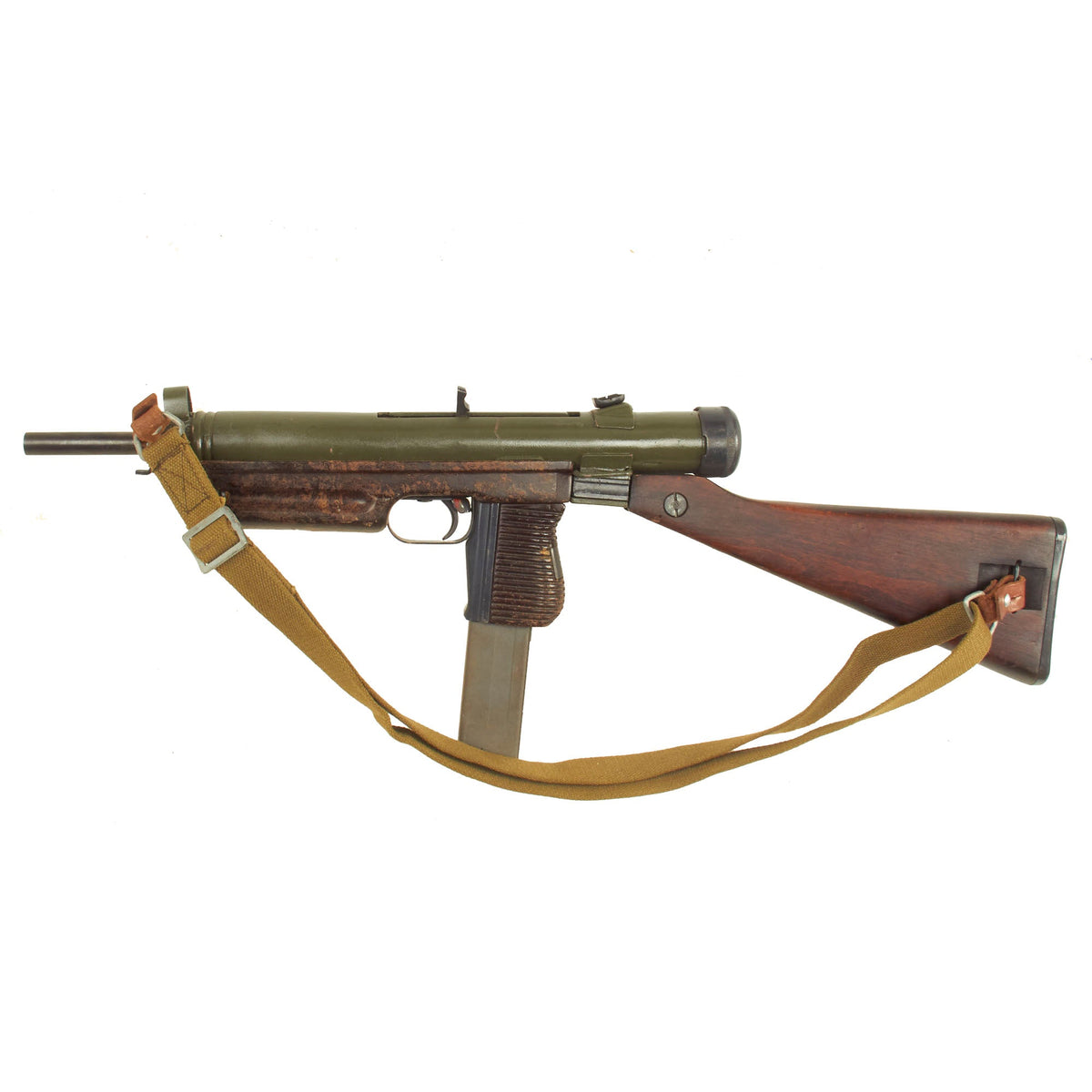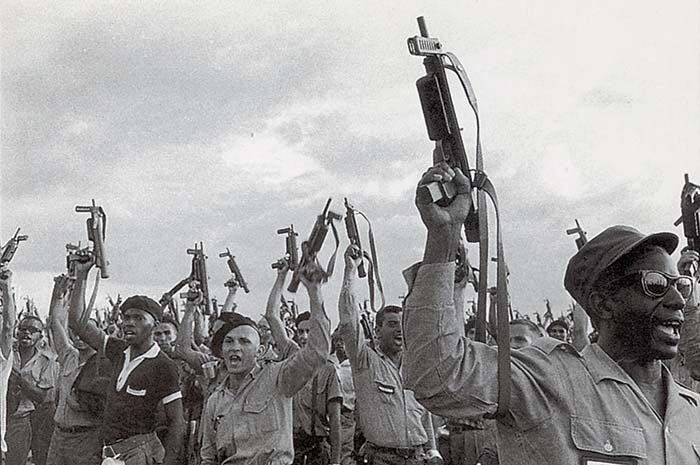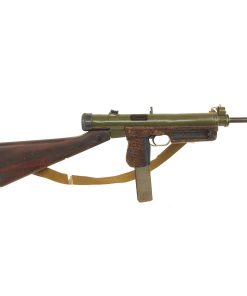Original Czechoslovakian Cold War Sa 24 (vz. 48a/52) Display Submachine Gun with Magazine & Sling – Bay Of Pigs Invasion Original Items
$ 995,00 $ 248,75
Original Item: One-of-a-Kind. This is an incredible Czech Issue Sa 24 vz. 48a/52 Display Submachine Gun, built from all original parts on an original BATF compliant non-firing display receiver, making this a 100% legal display Sub-Machine gun. This receiver was created by using portions of the original torch cut receiver, including the barrel bushing, combined with some new made steel portions. It has properly had a 25% section of the total length completely replaced entirely with solid steel bar stock. Meaning a 1/4 length section of the display receiver is solid steel, making this totally legal to own without a license of any kind.
The CZ Model 23/25 (properly, Sa 23/25 or Sa vz. 48b/samopal vz. 48b – samopal vzor 48 výsadkový, “submachine gun model year 1948 para”) was perhaps the best known of a series of Czechoslovak designed submachine guns introduced in 1948. There were four generally very similar submachine guns in this series: the Sa 23, Sa 24, Sa 25, and Sa 26. The primary designer was Jaroslav Holeček (September, 15 1923–October, 12 1997), chief engineer of the Česká zbrojovka Uherský Brod arms factory.
This is a great example of an Sa 24 (vz. 48a/52) Display Submachine gun, which was developed as the Warsaw Pact organization was being founded. It features a bakelite lower housing for the fore grip, which is continuous with the fore stock. The design even incorporates a magazine loader into the right front of the stock, which would be fitted with stripper clips to load the magazine, which then slid out the front of the stock as the rounds fed into the magazine. The slightly slanted forward pistol grip is definitive for the version chambered in the 7.62×25mm Tokarev used by the Warsaw Pact countries. These submachine guns were widely used during the early years of the Cold War.
The one action most particularly linked with this line of machine guns was the “Bay of Pigs” invasion, the failed attempt to retake Cuba from Castro after the revolution. There are period photographs showing several different variants of the submachine gun in use.
This example is in very nice condition, showing only light wear, and the “progressive” trigger still works. The magazine can be properly removed, and the rear rotating sight is fully functional. The display gun even comes with a very nice Warsaw Pact style sling, and some dummy rounds were fitted into the magazine to complete the look.
A fine original display gun fully compliant with BATF regulations to be non-functional and totally legal without any type of license.
NOTE: Magazine will be deactivated if shipped to a state where they are prohibited.
The Sa 23 series utilize a straightforward blowback action, with no locked breech, and fire from the open bolt position. They also use a progressive trigger for selecting between semi-automatic fire and fully automatic fire. Lightly pulling on the trigger will fire a single shot. Pulling the trigger farther to the rear in a continuous motion will fire fully automatically, until the trigger is released or the magazine is empty.
The Sa 23 series were submachine guns with a telescoping bolt, in which the forward part of the moving bolt extends forwards past the back end of the barrel, wrapping around that barrel. This feature reduces the required length of the submachine gun significantly and allows for better balance and handling. Handling was further improved by using a single vertical handgrip housing the magazine and trigger mechanism, roughly centered along the gun’s length. The gun’s receiver was machined from a single circular steel tube.
The design of the Sa 23 series submachine guns is most notable in the West for having inspired the open-bolt, blowback-operated, telescoping bolt design of the slightly later Uzi submachine gun.
Variations
– The Sa 23 (vz. 48a) was the first variant, using a fixed wood stock and firing standard 9×19mm Parabellum ammunition. Has a straight vertical pistol grip and ammunition magazine. Magazines were issued with 24 and 40 round capacity.
– The Sa 25 (vz. 48b) was the second and perhaps best known variant, using a folding metal stock, still firing 9×19mm Parabellum ammunition. Other than the folding stock, is identical to the Sa 23 and uses the same 24 and 40 round magazines.
The Sa 24 and Sa 26 were introduced after Czechoslovakia joined the Warsaw Pact, and were redesigned to fire 7.62×25mm Tokarev standard Soviet type pistol ammunition.
– The Sa 24 (vz. 48a/52) corresponds to the Sa.23, using a fixed wood stock and firing 7.62×25mm Tokarev ammunition. Can be visually distinguished from Sa.23 as it has a slightly forwards-slanted pistol grip and ammunition magazine, though the main receiver and other components are otherwise visibly identical. It was issued with 32-round magazines.
– The Sa 26 (vz. 48b/52) corresponds to the Sa.25, with a folding metal stock but otherwise identical to the Sa.24, using the same 32-round magazines.
Usage
The Sa 23 and 25 models were used by Cuba during the 1960s and 70s, and some can be seen in photos of the Bay of Pigs invasion.
After the Sa 25 was declared obsolete in 1968, many of the 9mm weapons were sold around the world. The surplus weapons were exported to other communist countries including North Vietnam. A somewhat-modified copy of the 9×19mm Parabellum model was produced in Rhodesia in the early 1970s as the LDP and given the nickname “Rhogun”. Manufacture was later transferred to South Africa where it was briefly marketed as the Sanna 77 in semi-automatic fire only. Some were also used by the Irish Republican Army during The Troubles in the 1980s and early 1990s, likely supplied by Lebanon.
After the Velvet Revolution Many of these guns were still in the inventories of the Czech Military, and were sold off as surplus, many ending up on the Black Market. Others were deactivated for sale to civilian collectors, or demilitarized and sent to the United States where many have been re-built as semi-automatic only carbines.
Fast Shipping with Professional Packaging
Thanks to our longstanding association with UPS FedEx DHL, and other major international carriers, we are able to provide a range of shipping options. Our warehouse staff is expertly trained and will wrap your products according to our exact and precise specifications. Prior to shipping, your goods will be thoroughly examined and securely secured. We ship to thousands clients each day across multiple countries. This shows how we're dedicated to be the largest retailer on the internet. Warehouses and distribution centres can be located throughout Europe as well as the USA.
Note: Orders with more than one item will be assigned a processing date depending on the item.
Before shipping before shipping, we'll conduct a thorough inspection of the items you have ordered. Today, the majority of orders will be delivered within 48 hours. The delivery time will be between 3-7 days.
Returns
The stock is dynamic and we cannot completely manage it because multiple stakeholders are involved, including our factory and warehouse. So the actual stock may alter at any time. It's possible that you may not receive your order once the order has been made.
Our policy is valid for a period of 30 days. If you don't receive the product within 30 days, we are not able to issue a refund or an exchange.
You can only return an item if it is unused and in the same state as the day you received it. You must have the item in its original packaging.
Related products
Uncategorized
Uncategorized
Uncategorized
Australian WWII Owen MK1 Machine Carbine SMG Custom Fabricated Replica with Sling Original Items
Uncategorized
Uncategorized
Uncategorized
Uncategorized
Uncategorized
Uncategorized
Uncategorized
Uncategorized
Uncategorized
Armored Burgonet Helmet & Polearm from Scottish Castle Leith Hall Circa 1700 Original Items
Uncategorized
Uncategorized
Uncategorized
Uncategorized
Uncategorized
Angolan Rebel 1970s era 60mm Inert Display Mortar from Angolan Civil War Original Items
Uncategorized
Uncategorized
Uncategorized
Band of Brothers ORIGINAL GERMAN WWII Le. F.H. 18 10.5cm ARTILLERY PIECE Original Items
Uncategorized
